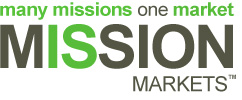The Sustainable Future - thoughts from the Mission Markets team
The recent economic downturn has many people striving to bring US GDP growth back up to its historic levels of about 3%. This growth should be considered against a backdrop of 1% or less population growth. Many forward looking economists see continuing compound growth in GDP as an impossibility given that current world populations are pushing against natural limits. As we approach (some say we have passed) these limits, continued growth in consumption requires increasing exploitation of diminishing natural capital such as forests, soils, fresh water systems, fisheries, etc. This can be termed uneconomic growth. Many pundits point to the current economic crisis as a failure of the finance sector and the common solution espoused (after improving regulation in the financial sector) is to increase consumption – this can be explained by the fact that 70% of the US economy is retail driven. But is this a real solution? Should our economy be 70% based on consumption – especially since we are only producing a fraction of what we consume, buying massive amounts of oil from countries antagonistic to US interests, and increasing our trade deficit with China as we purchase more and more products that don’t really create deep satisfaction and end up in landfills?
What if the “financial” crisis is based on a deeper crisis emanating from a global economy reaching its limits to healthy growth? What if we are deep into uneconomic growth and really what we are seeing are the first clear signs that we are heading towards a steady-state economy with zero real growth in GDP. The signs are overwhelming that we are at or over the limits to healthy growth. Climate disruptions and the hottest decade on record, an ever expanding list of extinct and endangered species, decreasing forest cover, expanding deserts, fisheries on the brink of collapse, coral reefs bleaching and dying, massive islands of plastic in our seas, man-made chemicals being found in all of us and even in species on the edge of civilization such as polar bears; the list is endless and frightening. Is the economic crisis just part of a global ecological crisis? Are we heading towards a steady state economy?
A steady state economy is similar to an ecosystem in a “dynamic balance”. The balance comes from a diverse set of interactions in which growth in some elements is checked by growth in others such that the overall system remains in a steady state – regardless of various internal dynamics. What would the global economy look like in steady state? It would not be stagnation as companies and countries that did not adapt to the changing (dynamic) conditions would diminish (economically speaking) and those companies and countries that moved the most rapidly to exploit the new dynamic balance would have the best chance. Nor would a steady state economy reduce technological and social innovation – on the contrary. Innovation would be spurred by competition for efficiency, sustainability, effectiveness and value generated.
One of the greatest opportunities in the world today is the emergence of sustainable businesses: clean energy being one obvious example. Clean energy and transportation create environmental, social and economic value and many companies are striving to capitalize on this opportunity. So even with the economy (especially GDP) remaining flat, there are enormous opportunities to create value and grow companies. Competition will be higher because the size of the economy (especially raw material consumption and waste generation) will not continue to expand on a planet with limited land, water, sunlight, and atmosphere. But perhaps the most important opportunity will be that as we consume less stuff, we will have more time to live better lives with family, friends and community. These turn out to be much greater generators of happiness then material consumption. Turn off the TV and go for a walk.
For an interesting perspective on the idea a steady state economy in Japan read New York Times Op-Ed Contributor: Japan and the Ancient Art of Shrugging by NORIHIRO KATO.
For more on the topics discussed above, read the book by Gus Speth “Bridge at the End of the World” and works by Herman Daly.
For more information on Mission Markets, visit www.missionmarkets.com.
- David Meyers, a member of the Mission Markets Team
Mission Markets Inc.
Mission Markets operates a private investment exchange facilitating transactions within the social and environmental capital markets. The Mission Markets platform provides companies and organizations with access to funding and impact investors an efficient way to evaluate, invest in and monitor sustainable investment opportunities.
MM8585

